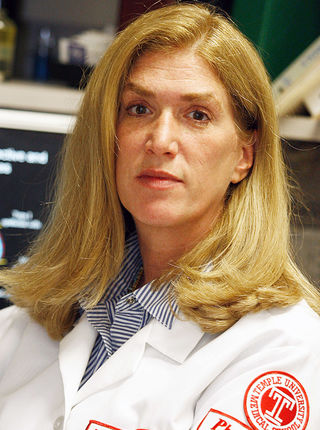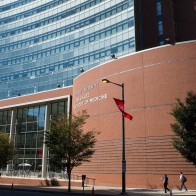Marla R. Wolfson, MS, PhD
Professor, Cardiovascular Sciences
Professor, Aging + Cardiovascular Discovery Center (ACDC)
Professor, Thoracic Medicine and Surgery
Professor, Pediatrics
Professor, Biomedical Education and Data Science
Professor, Physiology

- Contact Information
-
Contact Information
Phone
215-707-4573Fax
215-707-4003 - About Me
-
Research Interests
The Wolfson Laboratory (CENTRe: Collaborative for Environmental and Neonatal Therapeutics Research) focuses on innovative strategies to mitigate traumatic lung and brain injury and for the protection of the developing or mature lung from environmental or iatrogenic injury. Protocols under Dr. Wolfson’s direction at the bench and translated to the bedside, utilize perfluorochemical (PFC) liquids as a core technology for these purposes and are currently under FDA review for "first in person" studies. In addition, this laboratory has a long-standing relationship with developing non-invasive means of administering exogenous synthetic surfactants.
Perfluorochemical liquids are colorless, odorless, chemically inert liquids. They have high respiratory gas solubility, relatively low surface tension, and are thus uniquely suited to inflate the lung at low pressure while supporting gas exchange. The combination of the physicochemical properties of the PFC liquid and biophysical effects of the liquid on lung mechanics support physiologic responses. Due to relatively low surface tension, high respiratory gas solubility and high spreading coefficients, PFC instillation replaces the gas-liquid interface with a liquid-liquid interface at the lung surface while supporting an adequate alveolar reservoir for pulmonary gas exchange. In turn, high surface tension at the gas-liquid interface is eliminated and interfacial tension is reduced, allowing the lung to be inflated at lower pressures and remain recruited thus affording mechanoprotection to break the cycle of iatrogenic chronic lung disease.
Our work also indicates that PFCs are cytoprotective. Proposed mechanisms include reducing biotrauma and pulmonary inflammation associated with ventilation by indirect mechanisms, such as providing a mechanical barrier against neutrophil and macrophage infiltration and activation, or by directly modifying cellular responses. We have demonstrated reduced pulmonary inflammation and improved lung morphology in models following ventilation with aerosolized or neat - instilled PFC liquids.
The same properties that make PFC liquids attractive for liquid ventilation lend to their potential for intrapulmonary administration of various agents. Respiratory gas solubility supports gas exchange, while the low surface tension and ability to recruit lung volume also allow for drug distribution to under ventilated lung regions. Additionally, the inert nature precludes any drug-vehicle interactions. When agents are suspended in PFC liquid and delivered during liquid ventilation, it is possible to control the delivery rate, the time of injection, and the total amount of drug delivered to the target site, the lung. Our work has demonstrated utility of PFC liquids for intrapulmonary delivery of anti-inflammatory and anti-oxidant proteins, naked plasmid, and selective pulmonary vasodilators to mitigate pulmonary hypertension associated with primary lung pathologies as well as altitude induced hypoxic pulmonary vasoconstriction.
In addition to pulmonary mechanoprotective and cytoprotective applications of PFC liquids, Dr. Wolfson’s laboratory is also exploring the use of PFC liquids for therapeutic hypothermia. The physicochemical profile of high O2 solubility, low surface tension, high spreading coefficient, and evaporative characteristics of aerosolized perfluorochemical (PFC) support its use to increase heat carrying capacity of respired gas. Briefly, the effectiveness of hypothermic brain neuroprotection depends on how rapidly cooling is initiated and how quickly the therapeutic hypothermic zone is reached. Whole body surface or invasive intravascular methods are encumbered by equipment requirements and systemic instability. Due to proximity to the cerebral circulation, the nasopharyngeal pathway is uniquely suited for selective brain hypothermia; however, nasopharyngneaNP cooling with gases or liquids is limited by low heat capacity and respiratory compromise, respectively. As an alternative, we have partnered with industry to explore the use of PFC liquids as a relatively non-invasive and expedient means for preferential cerebral hypothermia for neuroprotection against insults secondary to clinical scenarios such as traumatic brain injury,stroke, and cardiac compromise.
Nasal continuous positive airway pressure (nCPAP) has become an increasingly popular alternative for preterm infants who do not initially require endotracheal intubation and positive pressure ventilation. While nCPAP avoids the potential morbidity associated with endotracheal intubation and mechanical ventilation, it has not been possible to effectively deliver exogenous surfactant to the lung due to limitations related to surfactant inactivation and aerosol technology. In addition bolus delivery of exogenous surfactants requires some form of intubation, often requiring an initial increase in driving pressures to facilitate alveolarization, and often involves ventilator disconnection during administration. Dr. Wolfson's laboratory has assumed a leadership role in performing studies in preterm preparations to develop drug/device combination, using a precision engineered, peptide-containing synthetic surfactant and a novel aerosol generator to potentially deliver large quantities of active surfactant to the lung when coupled with a CPAP generator or mechanical ventilator. This technology would allow delivery of aerosolized surfactant to preterm infants receiving nCPAP or those on a ventilator.
- Education, Training & Credentials
-
Educational Background
- Postdoctoral Fellowship, St. Christopher's Hospital for Children and Lewis Katz School of Medicine at Temple University, 1988
- PhD, Respiratory Physiology, Lewis Katz School of Medicine at Temple University, 1985
- MS, Physiology, Lewis Katz School of Medicine at Temple University, 1982
- BS, Physical Therapy, Temple University College of Allied Health Professions, 1975
Memberships
- American Physiological Society
- American Pediatric Society
- American Thoracic Society
- Alpha Omega Alpha
- Society for Pediatric Research
- Publications
-
Digital Bibliography

